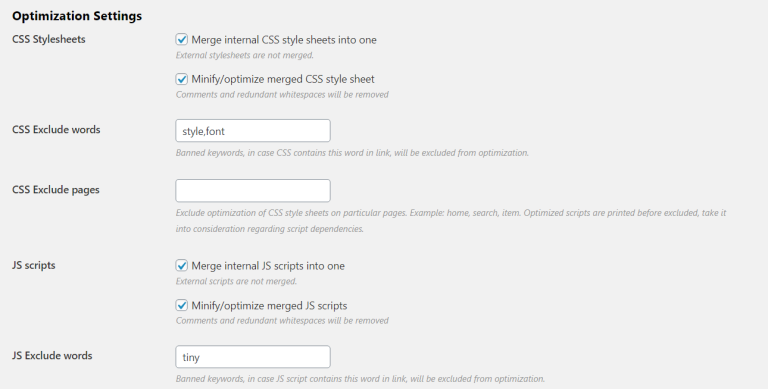In the ever-evolving digital landscape, video content has become a cornerstone of online engagement. From educational tutorials to product demonstrations, videos are driving traffic, increasing user interaction, and enhancing brand visibility. However, simply uploading a video to your website isn’t enough. To truly maximize its reach and ensure it’s discovered by the right audience, you need to optimize it for search engines.
This is where video schema markup comes into play. Video schema is a powerful SEO technique that helps search engines understand and display your video content more effectively in search results. By implementing structured data on your video pages, you can significantly improve the chances of your videos appearing in rich snippets, Google’s Video tab, and even voice search results.
In this article, we’ll explore what video schema is, why it matters, how to implement it, and the benefits it brings to your overall SEO strategy. Whether you’re a content creator, marketer, or website owner, understanding and leveraging video schema can make a world of difference in how your videos are discovered and ranked.
What Is Video Schema and Why It Matters
Video schema markup is a type of structured data that provides search engines with detailed information about your video content. It follows the guidelines of Schema.org, a collaborative effort between major search engines like Google, Bing, and Yahoo to standardize structured data across the web.
By using JSON-LD, Microdata, or RDFa formats, you can embed metadata such as the video title, description, duration, upload date, thumbnail URL, and more directly into your webpage. This structured data allows search engines to better understand the context and relevance of your video, making it easier to surface in search results.
The importance of video schema lies in its ability to enhance search visibility, click-through rates (CTR), and user engagement. When implemented correctly, it enables rich snippets—visually appealing search results that include video thumbnails, durations, and other key details. These rich results stand out in the SERPs, increasing the likelihood that users will click through to your content.
Moreover, video schema plays a crucial role in voice search optimization. As more users turn to smart assistants and voice-activated devices, structured data helps search engines deliver accurate and relevant answers. This makes your video content more accessible and valuable to a growing segment of internet users.
How Video Schema Impacts SEO Performance
Implementing video schema markup can have a significant impact on your SEO performance in several ways:
1. Enhances Search Visibility
With video schema, your videos are more likely to appear in search results, especially in Google’s Video tab. This increased visibility means more opportunities for your content to be seen by potential viewers.
2. Increases Click-Through Rates (CTR)
Rich snippets created through video schema are more engaging than traditional text-based results. Users are drawn to visually appealing results that include thumbnails, durations, and descriptions. This leads to higher CTRs, which can signal to search engines that your content is valuable and relevant.
3. Boosts Video Indexing
Search engines rely on structured data to crawl and index content efficiently. Video schema provides explicit details about your video, helping search engines categorize and prioritize it in search results. This is especially beneficial for websites with large video libraries.
4. Improves Engagement and User Experience
When users see a video preview in search results, they’re more likely to engage with the content. This can lead to longer time spent on your site, lower bounce rates, and improved user experience—all of which are positive signals for SEO.
5. Supports Voice Search Optimization
As voice search becomes more prevalent, structured data like video schema helps search engines provide accurate and concise answers. This ensures your video content is more accessible and visible to users who rely on voice-activated devices.
Step-by-Step Implementation Framework
Implementing video schema markup is a straightforward process that can be broken down into a few simple steps. Follow this framework to ensure your video content is properly optimized for search engines.
1. Define or Audit the Current Situation
Before implementing video schema, assess your current video content and its SEO performance. Identify which videos are most relevant and have the potential to benefit from structured data. Use tools like Google Search Console and Google Analytics to track video performance and identify areas for improvement.
2. Apply Tools, Methods, or Tactics
Choose the appropriate format for your video schema markup. While JSON-LD is Google’s preferred format, Microdata and RDFa are also viable options. Use a tool like Schema Markup Generator or Google’s Structured Data Testing Tool to create and validate your schema code.
Here’s an example of a basic video schema markup using JSON-LD:
{
"@context": "https://schema.org",
"@type": "VideoObject",
"name": "How to Optimize Video for SEO",
"description": "A step-by-step guide on optimizing video content for better search rankings.",
"thumbnailUrl": "https://example.com/thumbnail.jpg",
"uploadDate": "2024-02-14T08:00:00+00:00",
"duration": "PT2M33S",
"embedUrl": "https://example.com/video-page",
"contentUrl": "https://example.com/video.mp4"
}
3. Measure, Analyze, and Optimize
Once your video schema is implemented, monitor its performance using tools like Google Search Console and Google Analytics. Track metrics such as impressions, click-through rates, and engagement rates to determine the effectiveness of your schema markup.
Use the Google Rich Results Test to verify that your schema is correctly implemented and that your videos are appearing as rich snippets in search results. Regularly update your schema markup as needed to reflect changes in video metadata or content.
Real or Hypothetical Case Study
Let’s take a look at a hypothetical case study to illustrate the impact of video schema on SEO performance.
Scenario: A small e-commerce business sells handmade jewelry and uses video content to showcase their products. They have multiple product videos hosted on their website but notice that these videos aren’t receiving much traffic from search engines.
Action Taken: The business implements video schema markup on their product pages, providing structured data for each video. They also ensure that their thumbnails are high-quality and that their video content is accessible and crawlable by search engines.
Results: Within a few weeks, the business sees a noticeable increase in organic traffic. Their videos start appearing in Google’s Video tab, and the rich snippets generated by video schema help boost click-through rates. Over time, the business observes a 40% increase in video-related traffic and a 25% improvement in overall website engagement.
This case study highlights how video schema can transform the visibility and performance of your video content, leading to tangible improvements in SEO and user engagement.
Tools and Techniques for Video Schema
To make the most of video schema markup, consider using the following tools and techniques:
- Schema Markup Generator – A free tool that helps you generate structured data for your video content.
- Google’s Structured Data Testing Tool – A powerful tool for validating your schema markup and ensuring it’s correctly implemented.
- Google Search Console – Provides insights into how your videos are performing in search results and helps identify any issues with your schema.
- Google Analytics – Tracks video performance metrics such as impressions, clicks, and engagement.
- Yoast SEO – A popular WordPress plugin that includes support for video schema markup.
- Rank Math – Another comprehensive SEO plugin for WordPress that offers advanced schema markup features.
These tools can streamline the implementation and optimization of video schema, making it easier for you to improve your video content’s visibility and performance in search results.
Future Trends and AI Implications
As search engines continue to evolve, the role of structured data like video schema will only become more important. With the rise of AI-powered search algorithms and voice-activated assistants, the demand for rich, structured content is increasing.
In the future, we can expect search engines to place even greater emphasis on semantic understanding and multimodal content. Video schema will play a critical role in helping search engines interpret and rank video content more accurately.
Additionally, as AI-generated content becomes more prevalent, structured data will be essential for ensuring that AI-created videos are properly indexed and displayed in search results. This underscores the importance of staying ahead of the curve by implementing best practices for video schema and other forms of structured data.
Key Takeaways
- Video schema markup is a powerful SEO technique that helps search engines understand and display your video content more effectively.
- Implementing video schema can enhance search visibility, increase CTR, and boost engagement.
- Properly implemented video schema improves indexing, accessibility, and voice search optimization.
- Use tools like Google Search Console, Google Analytics, and Schema Markup Generators to implement and monitor your video schema.
- Stay ahead of the curve by adapting to AI-driven search algorithms and multimodal content trends.
By leveraging video schema markup, you can ensure that your videos are not only seen but also valued by search engines and users alike. Start optimizing your video content today and watch your online presence grow.
Meta Title: Video Schema — Improves Discoverability of Embedded Videos
Meta Description: Learn how video schema enhances the visibility of embedded videos in search results, boosting traffic and engagement.
SEO Tags (5): video schema, video SEO, structured data, rich snippets, video indexing
Internal Link Suggestions:
– [Parameter #1: Search Intent Alignment]
– [Parameter #2: Topical Depth & Relevance]
– [Parameter #3: Original Insights]
External Source Suggestions:
– https://developers.google.com/search/docs/advanced/structured-data/video
– https://schema.org/VideoObject
– https://support.google.com/webmasters/answer/9371002?hl=en










